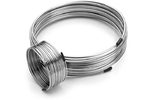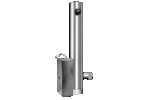- ▶
- Heaters/Source
- ▶
- Agilent Heaters and SensorsMass Spectrometry, Scientific Supplies & ManufacturingScientific Instrument Services 5973 Source Heater Tamper Resistant Allen Wrench 5973/5975 Quad Sensor 5985 Source Heater Assembly Agilent Interface Heater Assembly 5971 Interface Heater

- ▶
- Instrument Tubing
- ▶
- Gas RegulatorsModel 3530 Series - Single Stage Purity Brass Regulator Model 3510 Series - Single Stage High Purity Stainless Steel Regulators Model 3120 Series - Dual Stage Purity Brass Regulator Model 3810 Series - Dual Stage High Purity Stainless Steel Regulators Tescom Gas Line Regulators 3420 Series Tescom Gas Line Regulators 3450 Series Concoa In-Line Regulators Model 304 Series Concoa In-Line Regulators Model 324 Series
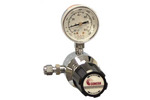
- TD
- ▶
- AccessoriesTD Supply Kit Desorption Tubes Adsorbent Resins Desorption Tube Needles Desorption Tube Seals Desorption System Fittings GC Cryo-Trap Extraction Cell TD Sample Loader Prepacked, Conditioned Desorption Tubes Desorption Tube Packing Accessories Stainless Steel Purge Heads Injection Port Liners Tenax TA Poster TD Application Notes Customer Service

- GCColumns Fused Silica Tubing Instrument Tubing Injection Port Liners Septa by Manufacturer SIS GC Cryo-Traps Ferrules Valves Swagelok® Fittings Pyrolysis Probe Accessories Gas Generators Gas Regulators Gas Purifiers and Filters Syringes SGE MEPS™-Micro Extraction by Packed Sorbent Purge and Trap System SGE SilFlow™ Stainless Steel Micro-Fluidic Platform Accessories NIST GC RI Library Other GC Supplies Catalog Page D1
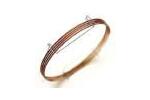
- ▶
- GC Cryo-traps
- Print Catalog
- ▶
- Catalog Page C1Short Path™ Thermal Desorption TD-5 [C2] Short Path™ Thermal Desorption TD-5 [C3] Short Path™ Thermal Desorption System TD-5 [C4] Short Path™ Thermal Desorption TD-5 [C5] AutoDesorb™ [C6] AutoDesorb™ [C7] AutoDesorb™ [C8] AutoDesorb™ [C9] Short Path™ Thermal Desorption Tubes [C10] Desorption System Fittings [C11] TD1/TD2/TD3/TD4/TD5/ Needles & Seals [C12] AutoDesorb™ Needles, Seals & Connecting Tubes [C13] Adsorbent Resin for Trapping Volatiles [C14] Adsorbent Resin for Trapping Volatiles [C15] Thermal Desorption Conditioning System [C16] Thermal Desorption Conditioning System [C17] Heated Thermal Desorption Sampling Chambers [C18] Extraction Cell for Papers, Polymers & Food Containers [C19] Thermal Desorption Sample Collection System [C20] Thermal Desorption Sample Collection System [C21] Cryo-Trap™ for TD-5 [C22] Cryo-Trap™ for the AutoDesorb™ System [C23] Purge & Trap System [C24] Temperature Controller & Heater Sleeves [C25] Thermal Desorption Accessories [C26] Thermal Desorption Low Flow Air Sampling Pump [C27] Gilibrator™ Air Flow Calibration System [C28] Gilibrator™ Air Flow Calibration System [C29] ALTEF Gas Sampling Bags [C30]
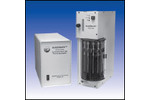
- Catalog Page D1GC Cryo-Traps from SIS [D2] GC Cryo-Trap™ [D3] Micro Cryo-Trap™(Catalog D4) Micro Cryo-Trap™ [D5] GC Cryo-Trap™ [D6] GC Cryo-Trap™ [D7] SGE Capillary Columns [D8] SGE Capillary Columns [D9] SGE Capillary Columns [D10] SGE GC Injection Port Liners [D11] SGE GC Injection Port Liners [D12] SGE GC Injection Port Liners [D13] GC Injection Port Liners & Seals [D14] GC Septa [D15] GC Ferrules & Sealing Rings [D16] GC Ferrules & Sealing Rings [D17] SGE Ferrules for Agilent Gas Chromatographs [D18] SGE Ferrules for Thermo & Varian G.C. [D19] SGE Ferrules for Perkin Elmer & Shimadzu GC [D20] TALU Technologies Ferrules [D21] TALU Technologies Ferrules [D22] TALU Technologies Ferrules [D23] Micro Needle Valves [D24] Fine Metering Valves [D25] Swagelok® Fittings [D26] GC Pyrolysis [D27] PEEKsil™ Tubing [D28] Fused Silica Tubing [D29] Instrument Tubing [D30] GC Accessories [D31] Parker/Balston® Hydrogen Generator [D32] Parker/Balston® Zero Air Generator [D33] Parker/Balston® FTIR Purge Gas Generator [D34] Parker/Balston®Nitrogen Generator [D35] Tescom Gas Cylinder Single Stage Regulators [D36] Tescom Gas Cylinder Dual Stage Regulators [D37] Tescom Gas Line Regulators [D38] Concoa In-Line Regulators [D39] GC Gas Purifiers & Filters [D40] GC Gas Purifiers & Filters [D41] SGE Diamond MS Syringes [D42] SGE Diamond MS Syringes [D43] SGE Diamond MS Syringes [D44] SGE Autosampler Syringes [D45] SGE Autosampler Syringes [D46]
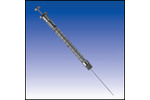
- ▶
- Catalog Page D3 (This Page)
D3
GC Cryo-Trap™
FAX: 908-806-6631
www.sisweb.com
Headspace GC Analysis:
L
ow boiling point volatiles from headspace samplers can
be trapped in the GC Cryo-Trap for subsequent analysis.
This will permit the analysis of large gas volume
injections (0.5 to 100 ml or more) as well as multiple injections of
headspace volumes into capillary GC columns.
After trapping
volatile organics at temperatures down to -180°C, the GC Cryo-
Trap is rapidly heated to temperatures up to 400°C to release the
volatiles for separation on the capillary column.
The resulting
peaks are highly resolved, even for the very light volatiles such as
butane and acetone.
In Figure #1, 0.5 µl of gasoline was dissolved in 5.0 ml of water
in a headspace vial.
The sample was heated to 70°C in a CTC
Headspace Sampler and then 1.0 ml of the headspace gas was
injected over a 35 second time interval into the GC injection port
and cryo-trapped in a narrow band on a 1.5µ film thickness guard
column in the GC Cryo-Trap at a temperature of -120°C.
The
sample was trapped for 5.0 minutes and then rapidly heated to
200°C to release the volatiles for GC analysis.
More than 100
compounds were detected and identified including the low boiling
volatiles butane and
pentane.
A lower trapping temperature of
-180°C was able to trap ethane and propane.
Applications of this
technique could easily be expanded to the detection of low boiling
volatiles in water, soil, food products, commercial products and
other solid, liquid and gas matrix samples.
Purge and Trap Applications:
In the thermal desorption technique, large volume gas samples
are typically purged from the sample or adsorbent resin, into the
GC injection port for analysis. Utilizing the GC Cryo-Trap, the
volatile organics from this large gas volume can be cryo-trapped or
cryo-focused in a narrow plug in the guard column in the
GC Cryo Trap.
In Figure #2, 200 milligram of black tea in water at 80°C was
purged with 450 ml of gas and the volatiles trapped on a Tenax TA
desorption trap.
The volatiles on the adsorbent resin were then
thermally desorbed off the resin at a temperature of 250°C utilizing
the SIS Short Path Thermal Desorption System, purged into the GC
injection port and cryo-trapped on a 5.0µ film thickness guard col-
umn in the GC Cryo-Trap at two different temperatures (0° and -
70°C).
The GC Cryo-Trap was then heated to 220°C to release the
trapped volatiles for subsequent GC/MS analysis. At a cryo-trap-
ping temperature of 0°C, volatiles down to methyl isobutyl ketone
were trapped.
At a trapping temperature of -70°C, eight additional
volatiles including acetone were trapped and identified.
Direct Injection Applications:
In Figure #3, a series of neat hydrocarbons from ethane
through nonane were direct injected into the GC injection port uti-
lizing the split mode and trapped on a 1.5µ film thickness guard col-
umn in the GC Cryo-Trap at a variety of temperatures.
This chart
demonstrates the range of volatiles that can be trapped as a func-
tion of the GC Cryo-Trap temperature.
Utilizing the Model 971 with
liquid CO
2
(minimum temperature -70°C), volatiles down to pentane
can be cryo-trapped.
Utilizing the new Model 981 GC Cryo-Trap
which uses liquid nitrogen for cooling to a minimum temperature of
-180°C permits the trapping of ethane on this guard column.
Figure 1
Headspace analysis of gasoline in water using
GC Cryo-Trap
Figure 2
Purge and trap of black tea, then thermal desorb into
GC-Cryo-Trap
Figure 3
Trapping Efficiency of Hydrocarbons on 0.53mm DB-5
(1.5µ) trapped at various GC Cryo-Trap temperatures
Applications of the GC Cryo-Trap and Micro Cryo-Trap™
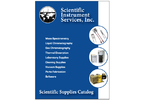 Table of Contents
Table of Contents
(Print Catalog)Table of Contents of the Scientific Instrument Services general catalog volume 36. Print Catalog D. Gas Chromatography Supplies SIS Vol. 36 catalog Section D - GC Services.
Print Catalog D. Gas Chromatography Supplies SIS Vol. 36 catalog Section D - GC Services.GC Cryo-Traps from SIS
(Catalog D2)GC Cryo-Trap™
(Catalog D3)Micro Cryo-Trap™
(Catalog D4)


